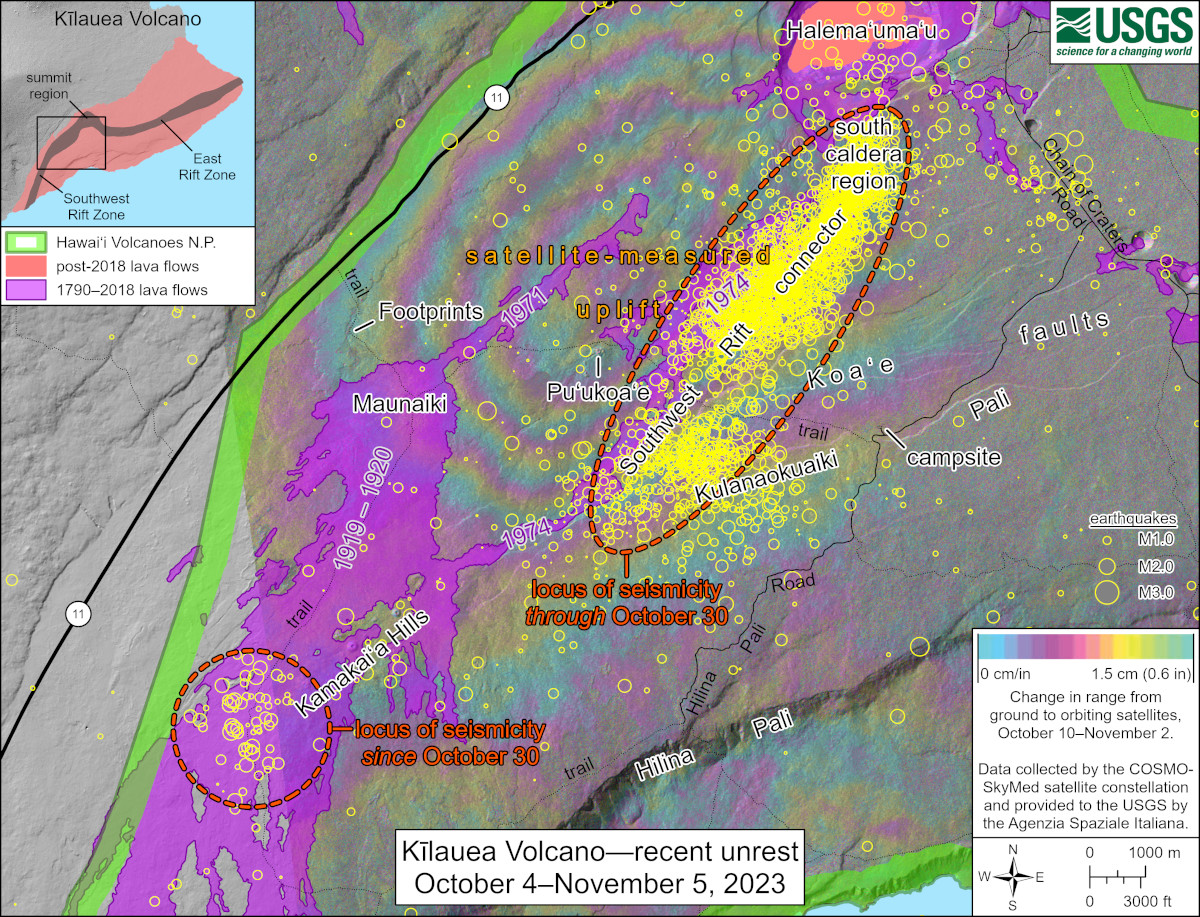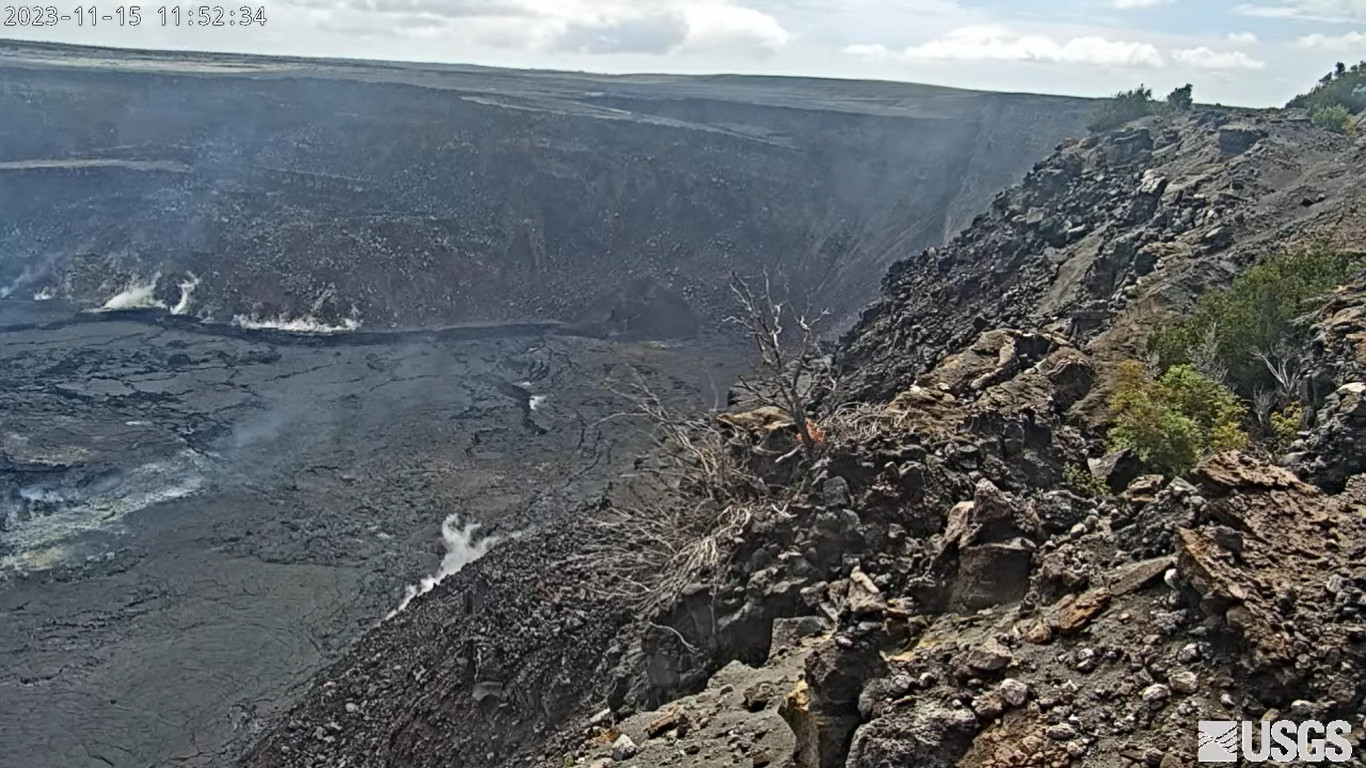(BIVN) – Kilauea is not erupting, but the volcanic unrest that began in October continues.
An earthquake swarm to the immediate south of the summit caldera that began five days ago persists, with moderate-levels of seismicity. The USGS Hawaiian Volcano Observatory continues to monitor this activity.
Although there is currently no sign of an imminent eruption, scientists say one could occur in the near future, with little or no warning. The Observatory says it would expect to see strong swarms of earthquakes, 1 to 2 hours before an eruption begins.
For now, the volcano alert level for Kilauea remains at ADVISORY.
From the USGS HVO update posted on Wednesday, November 15th:
Summit Observations: Moderate levels of seismicity continue after a swarm started on Friday, November 10th. Activity is primarily occurring immediately south of Kīlauea’s caldera and extending towards the southwest. HVO continues to monitor this activity.
The Uēkahuna summit tiltmeter, located northwest of the caldera, has indicated a minor deflation episode at the summit over the past 24 hours. The Sand Hill tiltmeter, located southwest of the caldera, has indicated ongoing inflation of a source south of Halemaʻumaʻu. Overall, the summit of Kīlauea remains at a high level of inflation, above the level reached prior to the most recent eruption in September 2023.
Sulfur dioxide (SO2) emission rates remain low and were measured at a rate of about 100 tonnes per day on October 19, 2023.
There is currently no sign of an imminent eruption, but eruptive activity is possible in the coming weeks or months. Increased inflation and earthquake activity (heightened unrest) are expected to precede an eruption. The onsets of previous summit eruptions have been marked by strong swarms of earthquakes caused by the emplacement of a dike 1-2 hours before eruptions.

USGS: “This map shows recent unrest at Kīlauea’s summit and Southwest Rift Zone. Yellow circles denote earthquake locations from October 4–November 5, 2023, as recorded by HVO seismometers. Through October 30, most of these events were occurring closer to the summit in an area known as the Southwest Rift connector, but since October 30 there has been a slight increase in seismicity below the Kamakaiʻa Hills in the middle Southwest Rift Zone. Colored fringes denote areas of ground deformation from October 10–November 2, as measured by satellite radar. Each color cycle represents 1.5 cm (0.6 in) of ground motion toward the satellite, indicating uplift associated with a magmatic intrusion.”
Rift Zone Observations: Over the past week, a small cluster of several dozen earthquakes has occurred along the Southwest Rift Zone. Most events have been smaller than magnitude-2 and have located in the middle of the Southwest Rift Zone, at depths of 1-3 miles (1-5 km) below sea level. We continue to closely monitor this area. There have been several minor episodes of seismicity in the Upper East Rift zone in the past month, but no unusual activity has been noted along the rest of the East Rift Zone. Measurements from continuous gas monitoring stations downwind of Puʻuʻōʻō in the middle East Rift Zone have been below detection limits for SO2, indicating that SO2 emissions from Puʻuʻōʻō are negligible.


by Big Island Video News11:59 am
on at
STORY SUMMARY
HAWAIʻI VOLCANOES NATIONAL PARK - The Hawaiian Volcano Observatory continues to monitor moderate-levels of seismicity to the immediate south of the summit caldera.